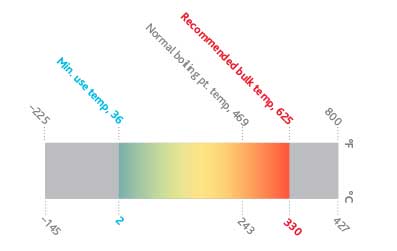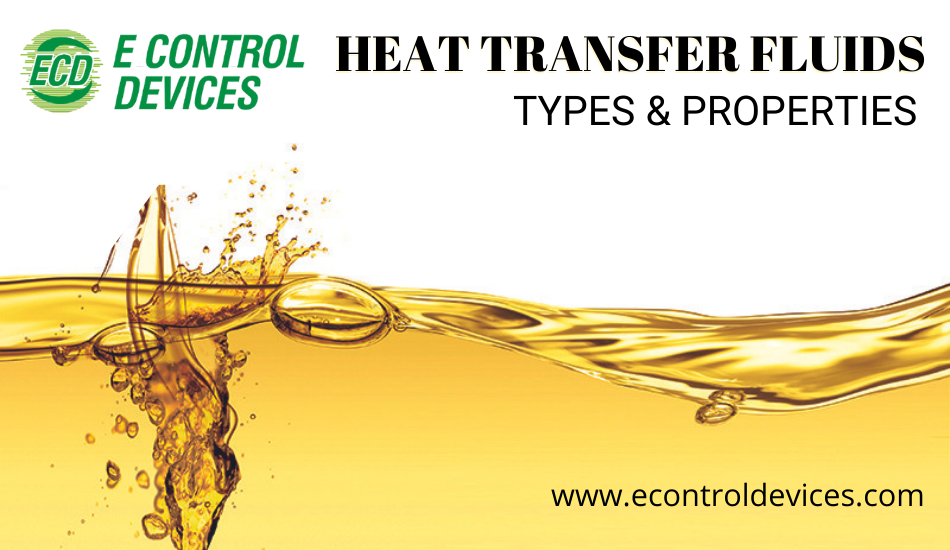Just How Warm Transfer Fluid Adds To Sustainable and Affordable Operations
In the modern-day industrial landscape, the role of warm transfer fluids (HTFs) in promoting lasting and cost-effective operations can not be overemphasized. These fluids are crucial in enhancing thermal management systems, thereby dramatically improving energy performance and decreasing functional expenses. Moreover, the ecological benefits of innovative HTFs, with their high thermal security and low poisoning, are undeniable. They not only expand system long life but likewise add to the decrease of hazardous exhausts. The real possibility of HTFs is understood with the meticulous option process, ensuring compatibility and security. What factors should assist this crucial option?
Understanding Heat Transfer Fluids
In the realm of thermal monitoring, warmth transfer liquids (HTFs) function as important agents for transferring thermal energy from one place to an additional. These liquids play a pivotal role in different commercial applications, consisting of chemical handling, power generation, and heating and cooling systems. HTFs are especially crafted to run within a large range of temperature levels, successfully facilitating the transfer of heat while keeping a stable thermal account. Their capability to function under extreme problems-- whether high temperatures or cryogenic levels-- makes them indispensable in settings demanding specific thermal control.
The make-up of warmth transfer fluids can vary significantly, consisting of alternatives such as mineral oils, artificial oils, glycols, and molten salts. Each kind provides distinct benefits, such as boosted thermal security, low viscosity, and high boiling points, which are selected based on certain functional demands. The option of HTF effects not only the efficiency of heat transfer but likewise the durability and security of the system in which it is employed.
As sectors continue to innovate, the advancement of innovative HTFs, identified by their improved thermal conductivity and decreased ecological effect, is crucial for satisfying the needs of modern thermal administration challenges.

Enhancing Power Effectiveness

Improving energy effectiveness has actually come to be a critical issue across various industries, triggering a closer evaluation of warm transfer fluids' role in optimizing thermal management systems. These fluids are essential to preserving the preferred temperature level in procedures, therefore minimizing energy waste and improving overall system performance. By choosing an ideal warm transfer liquid, markets can substantially enhance their energy efficiency, causing lowered power usage.

Advanced solutions of warmth transfer liquids have been developed to withstand severe temperature levels while preserving security and effectiveness. These developments extend the functional life expectancy of the fluid, minimizing the regularity of substitutes and energy-intensive upkeep tasks. The use of artificial or bio-based fluids supplies extra advantages in terms of decreased ecological impact, straightening with worldwide sustainability objectives. Consequently, boosting energy performance through optimum warm transfer fluid option is not only a technological necessity yet likewise an ecological essential.
Minimizing Functional Prices
Functional costs are a considerable factor to consider for markets looking for to keep affordable benefit, and the choice of heat transfer fluid plays an important duty in price management. Choosing a proper warm transfer liquid can bring about substantial cost savings by enhancing system efficiency and minimizing power intake. High-performance liquids decrease thermal click to read more destruction, which subsequently reduces the regularity of fluid replacement and downtime related to upkeep, therefore reducing operational expenses.
In addition, warmth transfer fluids with remarkable thermal stability and deterioration resistance extend the life-span of devices. This minimizes the demand for constant fixings and substitutes, which can be expensive and disruptive to procedures. By purchasing high-grade fluids, sectors can attain long-lasting reductions in upkeep expenses and improve the integrity of their systems.
Additionally, progressed warmth transfer fluids typically show reduced viscosity at operating temperature levels, which boosts pump efficiency and decreases power use in liquid blood circulation. Many contemporary warm transfer liquids are crafted to run effectively over a broad temperature level array, decreasing the requirement for numerous liquid types, read the full info here therefore streamlining inventory requirements and decreasing connected expenses.
Ecological Effect Decrease
The press towards lowering ecological effect has obtained energy in markets leveraging heat transfer fluids. Warmth transfer fluids (HTFs) play a vital function in this transition, offering opportunities to enhance power effectiveness and decrease emissions - heat transfer fluid.
In addition, making use of sophisticated warmth transfer fluids adds to enhanced system efficiency, lowering the general power usage. This decrease not only causes expense savings however also decreases carbon dioxide exhausts, helping in the fight versus climate adjustment. Fluids that are eco-friendly and recyclable even more boost sustainability efforts, as they lessen waste and promote round economic climate techniques.
Furthermore, including HTFs into closed-loop systems prevents fluid loss and contamination of the surrounding atmosphere. This approach makes sure that fluids are recycled, reducing the demand for brand-new resources and restricting waste generation. By embracing these eco aware techniques, markets can considerably reduce their environmental influence while maintaining high operational effectiveness, straightening with global sustainability goals and regulative needs.
Picking the Right HTF
Selecting the appropriate warmth transfer liquid (HTF) is an essential action in progressing ecological sustainability within commercial procedures - heat transfer fluid. An ideal HTF should possess a high thermal ability, reduced thickness, and high thermal conductivity to make certain efficient heat transfer.
This ensures long life and decreases upkeep expenses. The liquid useful reference must be safe and naturally degradable, minimizing its environmental footprint and making certain compliance with environmental laws.
Final Thought

Comments on “The Relevance of Thermal Security in Heat Transfer Fluid Option”